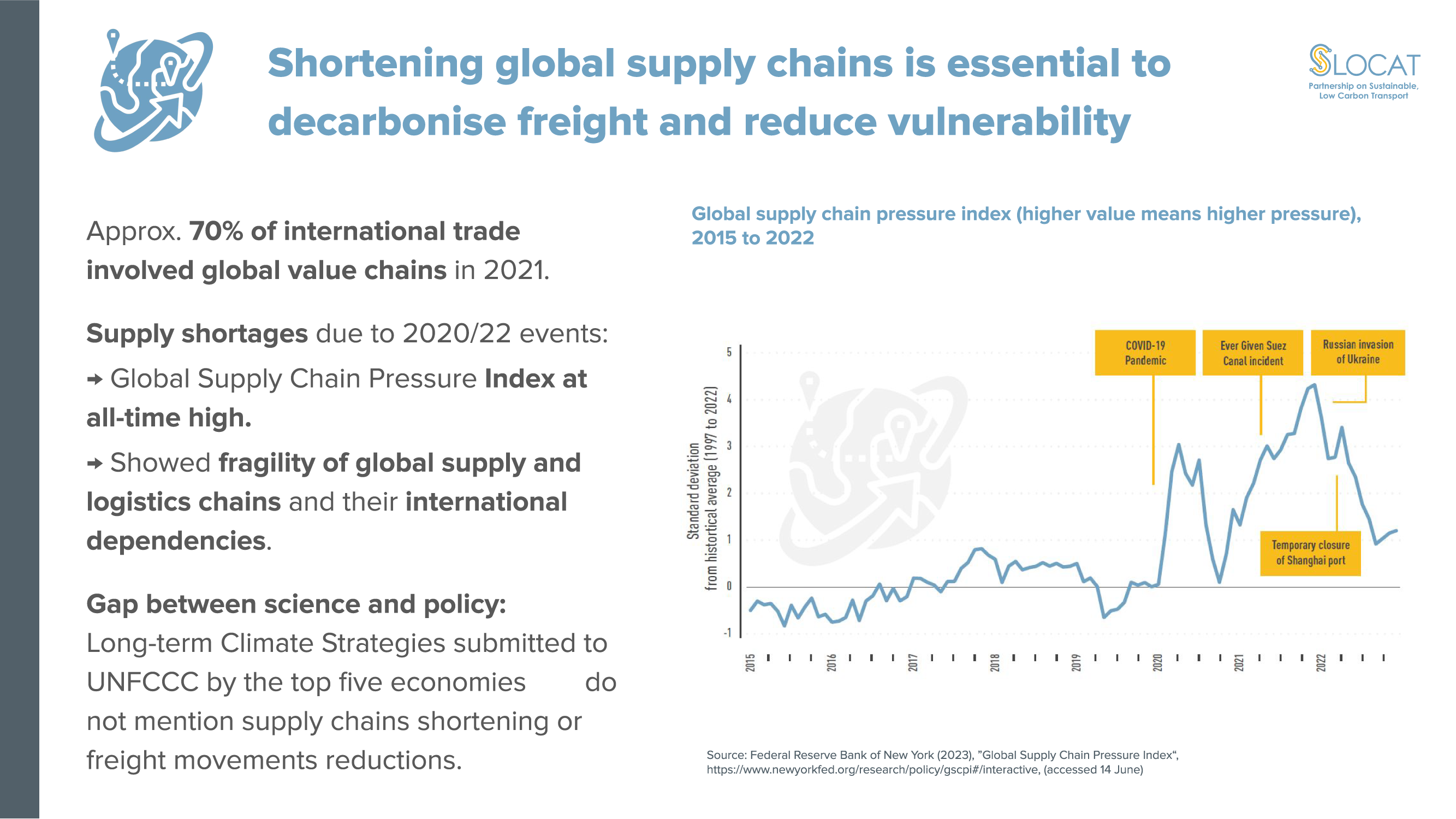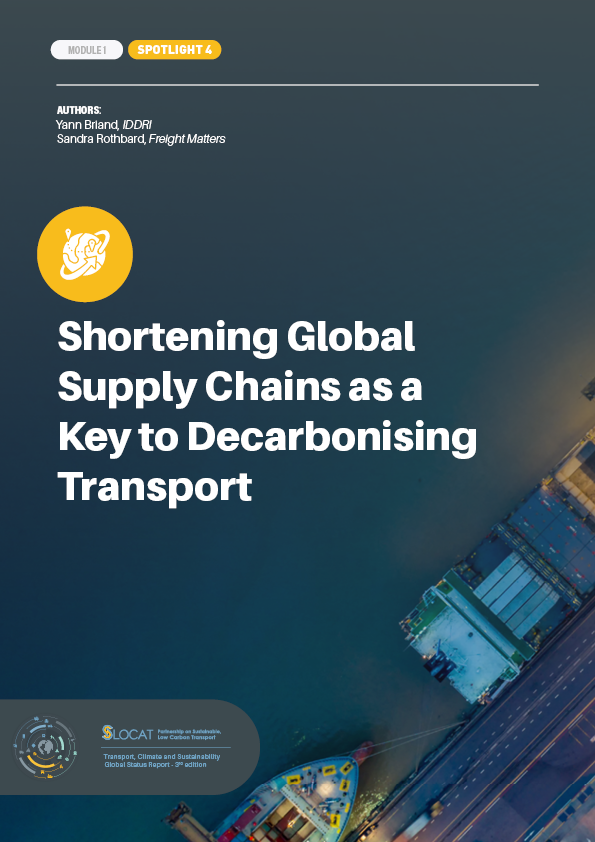-
Shortening Global Supply Chains as a Key to Decarbonising Transport
- Key Findings
The historical development of global supply chains: past drivers
- In the past 50 years, the length and fragmentation of supply chains have exploded due to new manufacturing, transport and logistics, and communication technologies, as well as international economic regulations related to trade liberalisation.
- Today, international production is highly organised within global value chains, where the different stages of the production process are located across different countries. As of 2021, an estimated 70% of international trade involved global value chains.
- These drivers enabled an internationalisation of supply chains in offering new business opportunities to increase profits, access new markets or reduce costs due to international trade competition.
Recent disruptions to global supply chains revealed vulnerabilities
- The global financial crisis of 2007 – 2008 and the multiple recent events of 2020 – 2022 such as the COVID-19 pandemic, the Russian invasion of Ukraine, and the blockage of the Suez Canal caused supply shortages, raising awareness of the fragility of global supply and logistics chains and their international dependencies. These disruptions resulted in the Global Supply Chain Pressure Index recording an all-time high value of 4.3 above the historical average of 1997 to 2022.
- These past drivers and system organisation led supply chains to become more vulnerable to external disruptions.
The future of global supply chains: a changing context
- In the future, an ongoing changing context could lead to more regional value chains that are closer to customers, corresponding to a shortening of global supply chains.
- Key structural changing drivers include a shift in economic policies towards protectionism of employment and industries; changes in the international security context to reinforce security of supply and value chain independence; rising pressures to reduce carbon emissions; and the continuous evolution of manufacturing technologies.
Perspectives for the international climate cooperation agenda
- A review of the long-term strategies of the five leading economies – China, India, Japan, the United States and the EU – published between 2020 and 2022 found that none of them mention phrases related to shortening supply chain distances, reducing freight movements or reducing long-distance freight, shifting supply chains closer and developing local production-consumption ecosystems. This reveals an important gap between science and policy.
- These changes are overlooked in existing international climate discussions and not taken enough into account by companies in their long-term climate strategies.
- The possibility of a reduction of movements and distances, should be considered as a core component of any realistic freight decarbonisation strategies reaching zero emissions by 2050. This demand-side component of the strategy should be articulated with necessary technological changes in a coherent systemic change.
- In the perspective of the first Global Stocktake (2022-23) and future revisions of countries’ Nationally Determined Contributions and Long-Term Strategies under the Paris Agreement, an international climate policy agenda on identifying barriers and enablers for strengthening international cooperation towards shorter and more resilient supply chains should be opened. Critical international cooperation activities should help to discuss opportunities and issues related to the changing context, and coordinate collective action to avoid unilateral and unfair decisions.
Authors: Yann Briand, IDDRI; Sandra Rothbard, Freight Matters


